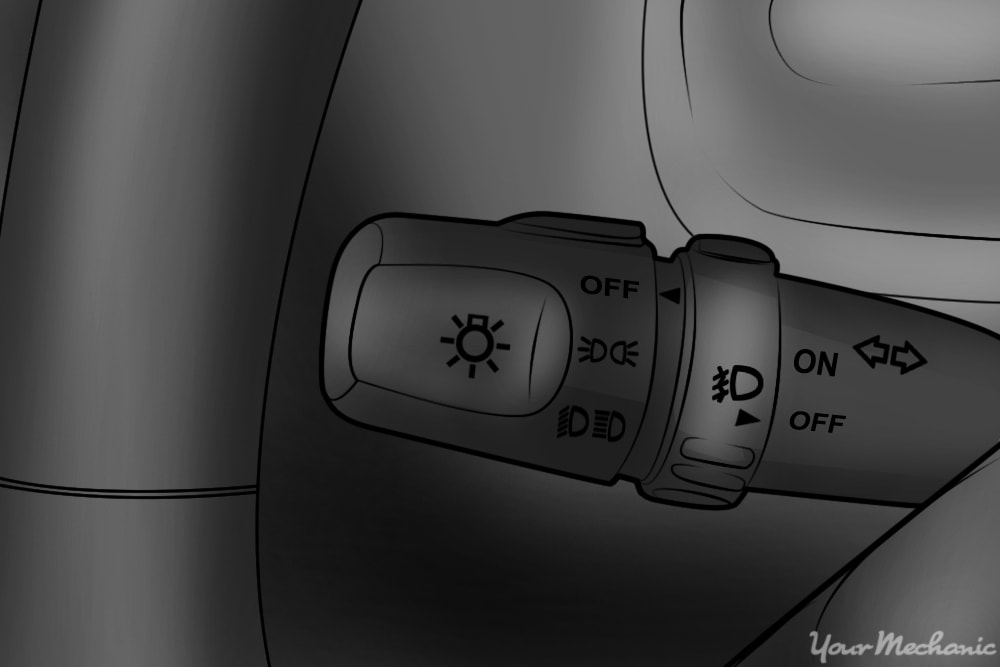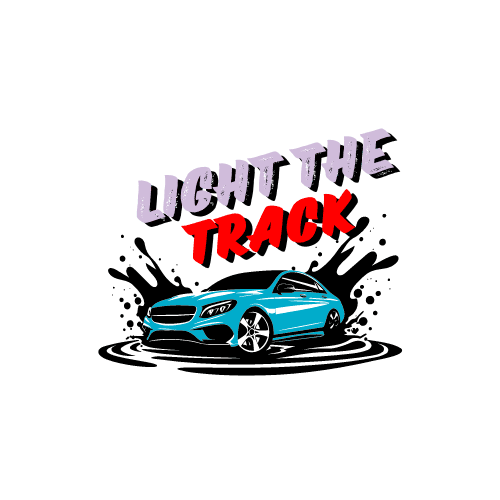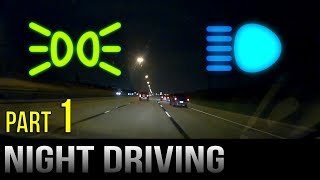Use low beam headlights at night for improved visibility and safety without blinding other drivers. Driving at night requires the right headlights to ensure safety and visibility.
The choice between high beam and low beam headlights can significantly impact your driving experience. Low beam headlights, also known as dipped headlights, are the most suitable option for night driving as they provide adequate illumination without causing glare to other drivers.
Additionally, they are also beneficial in adverse weather conditions such as rain, snow, sleet, or fog, as well as during dawn and dusk. Understanding the importance of using the correct headlights at night is crucial for ensuring a safe and secure driving experience.
Choosing The Right Headlights For Night Driving
When choosing the right headlights for night driving, it’s important to consider the types of headlight bulbs available. The three main types are LED, HID, and halogen. LED headlights are the best option for nighttime driving as they provide a clear, bright light without glare, ensuring that you won’t blind other drivers on the road.
Using low-beam headlights, also known as dipped headlights, is essential for night driving. They improve visibility and safety not only at night but also during adverse weather conditions like rain, snow, or fog, as well as at dawn and dusk.
It’s crucial to know when to use high-beam headlights. They should be used when driving on unlit roads or when there are no other vehicles around. However, it’s important to dim them when approaching other vehicles to avoid blinding the drivers.
By selecting the appropriate headlights for night driving and understanding when to use low beams and high beams, you can ensure a safer and more comfortable driving experience.

Credit: www.yourmechanic.com
Understanding Low Beam Headlights
Utilize low beam headlights for night driving to enhance visibility and safety, especially during adverse weather conditions or low light periods. Opt for LED headlights for the clearest and brightest illumination without causing glare to other drivers on the road.
| Understanding Low Beam Headlights |
| Importance of Low Beams |
| Low beams are essential when driving at night. They not only help improve visibility and safety, but they are also recommended during adverse weather conditions such as rain, snow, sleet, or fog. Low beams are especially useful just after sunrise and just before sunset when the lighting conditions are dim. By using low beams, you can ensure that other drivers can see your vehicle and that you have a clear view of the road ahead. It is important to note that low beams should be used instead of high beams in situations where there is oncoming traffic or when driving in urban areas. Using low beams in these situations helps prevent blinding other drivers and ensures a safe driving experience for everyone on the road. |
The Role Of High Beam Headlights
High beam headlights are ideal for night driving in dark, rural areas with no oncoming traffic. They provide maximum visibility ahead, but remember to switch to low beams when approaching other vehicles to avoid blinding them.
| Using high beam headlights is crucial for nighttime driving to improve visibility on dark roads. Activating high beams is recommended on unlit roads or rural areas with minimal street lighting. Avoid using high beams in well-lit urban areas to prevent blinding other drivers. Low beam headlights are suitable for city driving and heavy traffic conditions. High beam headlights are ideal for open highways and remote locations with limited light sources. Remember to switch to low beams when approaching oncoming vehicles to ensure safety for all drivers on the road. |

Credit: m.youtube.com
Daytime Running Lights Explained
When driving at night, it is important to use the appropriate headlights to ensure safety on the road. One type of headlight that is commonly used during the day and can also be used at night is the Daytime Running Lights (DRL). The purpose of DRL is to enhance visibility for other drivers and increase road safety. These lights are typically low beams and provide adequate lighting without causing glare to oncoming traffic.
During the night, it is recommended to use low beam headlights or dipped headlights. These headlights provide sufficient illumination without causing discomfort or blinding other drivers. They are especially useful in adverse weather conditions such as rain, snow, or fog. It is important to avoid using high beam headlights unless necessary, as they can be blinding to other drivers.
When it comes to choosing the best headlights for night driving, LED headlights are considered the most suitable option. They provide a clear and bright light without causing glare, ensuring optimal visibility without compromising the safety of other road users.
In conclusion, understanding the different types of headlights and when to use them is essential for safe driving at night. By using the appropriate headlights, such as DRL during the day and low beam or LED headlights at night, drivers can ensure better visibility and reduce the risk of accidents on the road.
Dipped Headlights Demystified
Discover the best headlights to use at night with our guide to dipped headlights. Low beams are essential for nighttime driving, but they also improve visibility and safety during adverse weather conditions. Whether it’s rain, snow, sleet, or fog, using dipped headlights can greatly enhance your driving experience.
| What Are Dipped Headlights? |
| Low beam headlights or dipped headlights are the ones that are used for night driving. They are also used during the day in adverse weather conditions, such as rain, fog, or snow. Dipped headlights are designed to provide adequate lighting without blinding other drivers on the road. They are aimed downwards to illuminate the road ahead without glaring into the eyes of oncoming drivers. |
| Optimal Conditions for Dipped Headlights |
| Dipped headlights should be used when driving at night, during inclement weather, and when the road ahead is poorly lit. These conditions can make it difficult to see other vehicles, pedestrians, or obstacles on the road. Dipped headlights can help to improve visibility and reduce the risk of accidents. However, it’s important to remember to switch to low beams when approaching oncoming traffic or when driving behind another vehicle to avoid blinding other drivers. |
Credit: weberautomotive.com
Safety First: Avoiding Glare To Oncoming Traffic
To avoid glare to oncoming traffic, it is important to use the right headlights while driving at night. Low beam headlights are essential for night driving and can also improve visibility during the day in adverse weather conditions. LED headlights are the best option for nighttime driving, as they provide a clear and bright light without causing glare to other drivers.
High Beams And Glare
High beams are extremely bright and can cause glare for oncoming traffic, reducing their visibility. To minimize glare, switch to low beams when approaching other vehicles. Additionally, ensure that your headlights are properly aligned to prevent excessive glare. Avoid using high beams in foggy conditions as the light can reflect back, further impairing your vision.
Advanced Tips For Night Driving
When driving at night, it is important to know what headlights to use. The best option is to use low beam headlights, as they provide improved visibility and safety. Additionally, LED headlights are recommended for nighttime driving, as they emit a clear, bright light without causing glare for other drivers.
| When driving at night, it is important to use the correct headlights to ensure optimal visibility. Low beam headlights are recommended for nighttime driving as they provide adequate illumination without blinding other drivers. Additionally, LED headlights are considered the best option for night driving due to their clear and bright light output. It is crucial to avoid using high beams when there is oncoming traffic to prevent glare and ensure safe driving conditions. |
| Adjusting to darkness is essential for night driving to maintain focus and awareness on the road. Managing fatigue and avoiding alcohol consumption are also crucial factors in ensuring driver safety during nighttime journeys. By following these tips and using the appropriate headlights, drivers can navigate the roads confidently and securely after dark. |
Myths And Facts About Night Driving Lights
Enhance your night driving with LED headlights, offering clear visibility without blinding other drivers. Low beams are vital for safe driving at night, boosting visibility during adverse weather conditions and at dawn or dusk. Upgrade to LED for a safer nighttime driving experience.
| Common Misconceptions | Evidence-Based Practices |
| Low beam headlights are crucial for night driving. | Using low beams in adverse weather conditions enhances visibility. |
| LED headlights are recommended for nighttime driving. | LED lights provide clear, bright light without causing glare. |
| High beams should be used judiciously to avoid blinding other drivers. | Dim your high beams when approaching oncoming vehicles. |
Frequently Asked Questions
What Headlights Should Be On At Night?
Low beam headlights should be used at night. They are essential for driving in the dark and also improve visibility and safety during adverse weather conditions or at dawn and dusk. LED headlights are the best choice for nighttime driving as they provide clear and bright light without glare.
Which Headlights Are Best For Night Driving?
LED headlights are the best for night driving. They provide clear, bright light without glare, ensuring improved visibility and safety on the road. LED headlights also prevent blinding other drivers.
What Lights Should Be On In A Car At Night?
At night, low beam headlights should be used in the car for improved visibility and safety. Additionally, they are essential during adverse weather conditions such as rain, snow, or fog, as well as during the period just after sunrise and just before sunset.
Should Drivers Use High-beam Headlights At Night?
No, drivers should not use high-beam headlights at night when other vehicles are present. High beams can blind oncoming drivers, which can lead to accidents. Instead, drivers should use low-beam headlights, which provide adequate visibility without blinding other drivers. It’s important to prioritize safety on the road.
What Are The Best Headlights For Night Driving?
LED headlights are best for nighttime driving as they provide clear, bright light without causing glare for other drivers.
When Should I Use Low Beam Headlights At Night?
Low beam headlights are essential for driving at night and also improve visibility during adverse weather conditions and at twilight hours.
Which Car Lights Should Be On At Night?
Low beam headlights, also known as dipped headlights, should be used at night for safe and efficient driving.
Conclusion
To ensure safe driving at night, it is important to use the appropriate headlights. Low beam headlights are essential for night driving, but they can also be used during the day to improve visibility in adverse weather conditions. LED headlights are the best option for nighttime driving, as they provide clear, bright light without causing glare to other drivers.
It is also important to know when to use high beam headlights and when to switch to low beams to avoid blinding other drivers. By following these guidelines, you can ensure a safer and more comfortable driving experience at night.


Leave a Reply